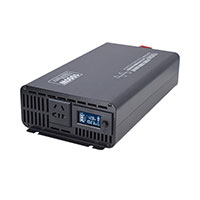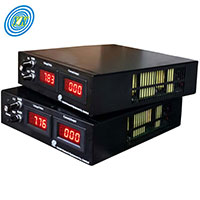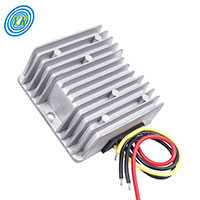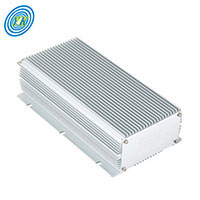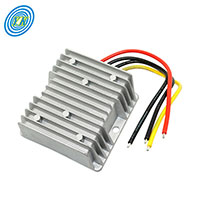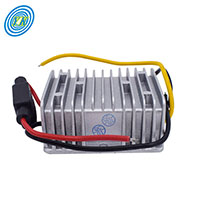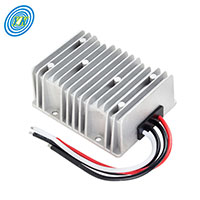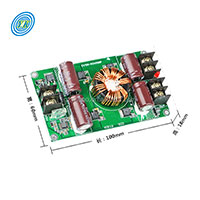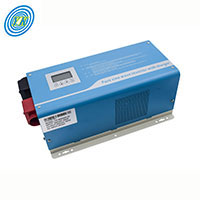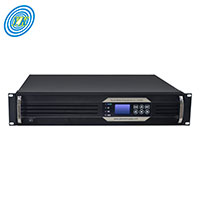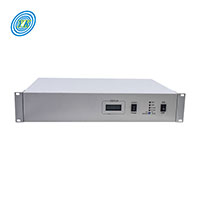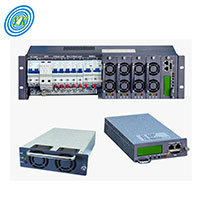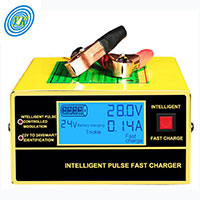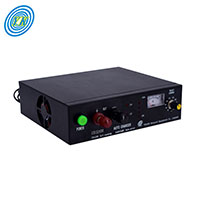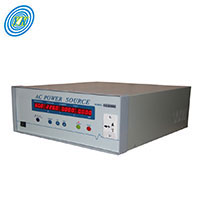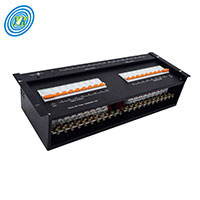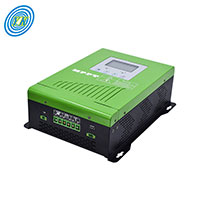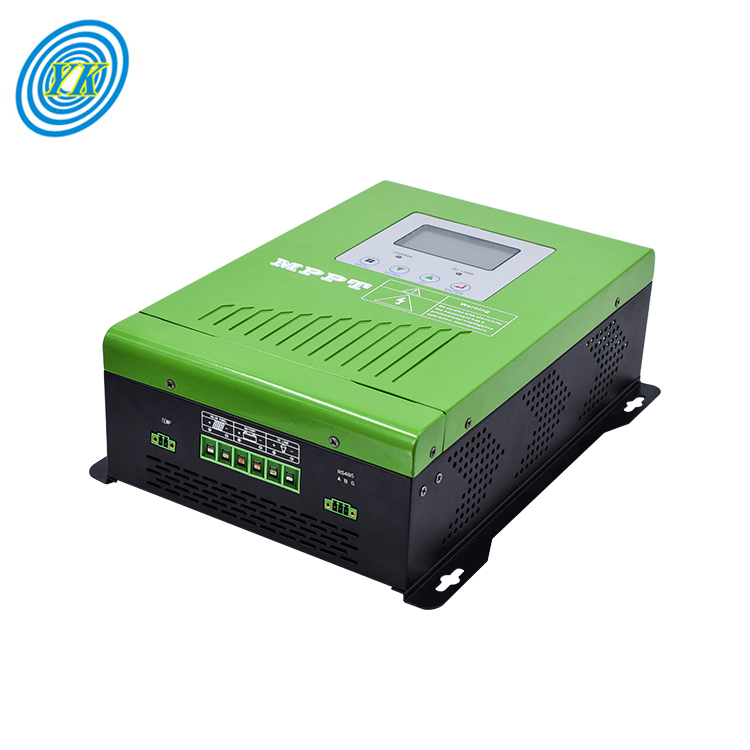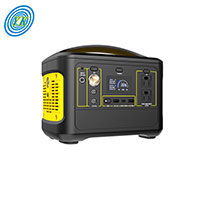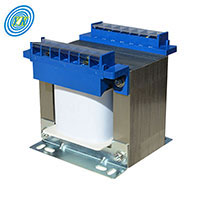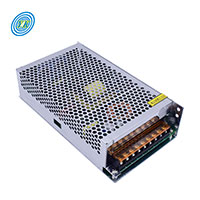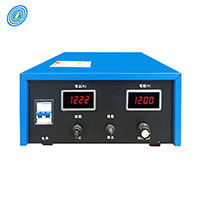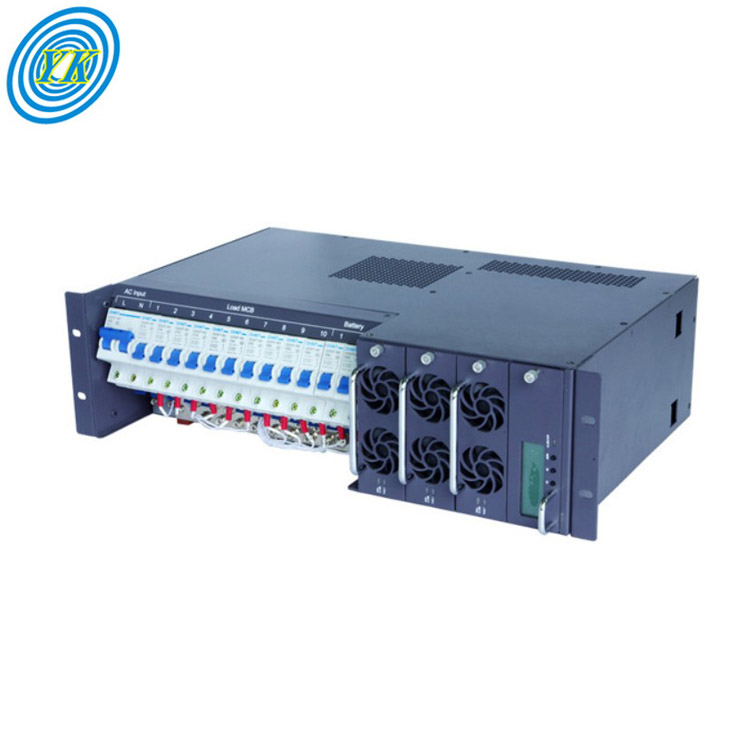
The Pivotal Role of Rectifiers in Battery Charging Systems
Click: 1908 Date: 09/13/2023 09::43::57 AM
The Pivotal Role of Rectifiers in Battery Charging SystemsRectifiers play a crucial role in battery charging systems, ensuring efficient and safe charging processes. This article will discuss the importance of rectifiers in battery charging systems, focusing on different converter topologies and power control strategies.Battery charging infrastructure for electric vehicles (EVs) requires converter topologies and power control strategies that offer high efficiency and power factor correction. Some of the popular converter topologies for rapid battery charging include SWISS rectifier, matrix converter, and Vienna rectifier.SWISS rectifier: This rectifier is employed when efficiency must be increased based on application requirements. It provides better efficiency compared to conventional rectifiers and offers a wide output voltage control range while maintaining power factor correction (PFC) at the input. The SWISS rectifier enables direct start-up and allows for dynamic current limitations at the output.Matrix converter: This rectifier is used for the regenerative operation of charging stations and vehicle-to-grid applications with high efficiency. It is a forced commutated converter that uses an array of controlled bidirectional switches, allowing high-frequency operations. The matrix converter does not require a DC-link circuit or large energy storage elements, resulting in improved power factor and reduced harmonics in line current at the end.Vienna rectifier: This rectifier is popular for achieving high power factors and lower harmonic distortion. It has low switching losses due to low voltage stress in the switches. The Vienna rectifier consists of only one active switch per phase, making it easier to control and more dependable. It is essentially a PWM converter, with the boost inductor at the input ascertaining power factor correction. The absence of a neutral point connection is an advantage of this topology.In terms of power control strategies, voltage-oriented control (VOC) and direct power control (DPC) are two common approaches. VOC is a linear control method with PI controllers, while DPC is a non-linear hysteresis control method using a hysteresis controller with a lookup table.When comparing the three converter topologies, the Vienna rectifier is considered the most optimal for charging stations due to its high efficiency, high power density, unity power factor, and low total harmonic distortion. Additionally, its compact size makes it an ideal choice for EV charging systems.In conclusion, rectifiers play a vital role in battery charging systems by ensuring efficient and safe charging processes. Various converter topologies and power control strategies can be employed to optimize charging performance, with the Vienna rectifier being the most
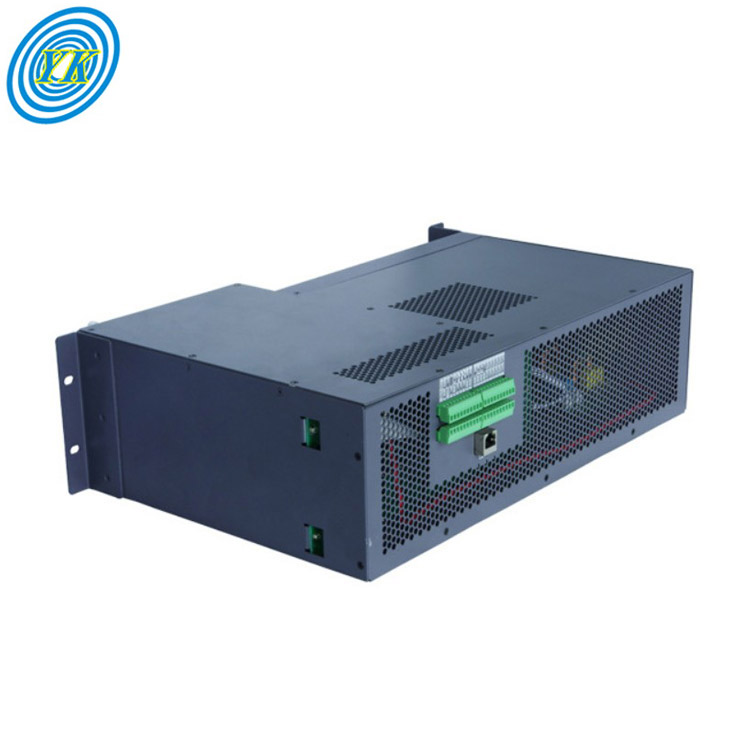
A Deep Dive into the Functionality of Rectifiers in Radio Signal Processing
Click: 1376 Date: 09/13/2023 09::36::36 AM
A Deep Dive into the Functionality of Rectifiers in Radio Signal ProcessingA rectifier is an electrical device that converts alternating current (AC), which periodically reverses direction, into direct current (DC), which flows in only one direction. This process is known as rectification, and it's fundamental to a variety of applications, including radio signal processing.The Role of Rectifiers in Radio Signal ProcessingIn the context of radio signal processing, rectifiers serve as detectors of radio signals. Early radio receivers, such as crystal radios, used a "cat's whisker" of fine wire pressing on a crystal of galena (lead sulfide) to serve as a point-contact rectifier or "crystal detector".The rectifier works by allowing the radio frequency AC voltage from the tuned circuit to pass in one direction only, giving a DC voltage. This DC voltage is then used to drive the headphones or speaker, allowing you to hear the broadcast.Rectifiers are also used for detection of amplitude modulated radio signals. The signal may be amplified before detection. If not, a very low voltage drop diode or a diode biased with a fixed voltage must be used. When using a rectifier for demodulation, the capacitor and load resistance must be carefully matched.Different Types of RectifiersThere are several types of rectifiers that can be used in radio signal processing, each with its own advantages and disadvantages.Diode Vacuum Tube: The thermionic vacuum tube diode, originally called the Fleming valve, was invented by John Ambrose Fleming in 1904 as a detector for radio waves in radio receivers and evolved into a general rectifier. It consisted of an evacuated glass bulb with a filament heated by a separate current and a metal plate anode.Crystal Detector: The crystal detector was the earliest type of semiconductor diode. Invented by Jagadish Chandra Bose and developed by G. W. Pickard starting in 1902, it was a significant improvement over earlier detectors such as the coherer. The crystal detector was widely used prior to vacuum tubes becoming available.Silicon and Germanium Diodes: Silicon diodes are the most widely used rectifiers for lower voltages and powers and have largely replaced other rectifiers. Germanium diodes have an inherent advantage over silicon diodes in low voltage circuits due to their substantially lower forward voltage.ConclusionRectifiers play a crucial role in radio signal processing, converting the AC signal picked up by the antenna into a DC signal that can be processed and converted into sound. Understanding how different types of rectifiers work and their respective advantages and disadvantages can help in the design and optimization of radio receivers.
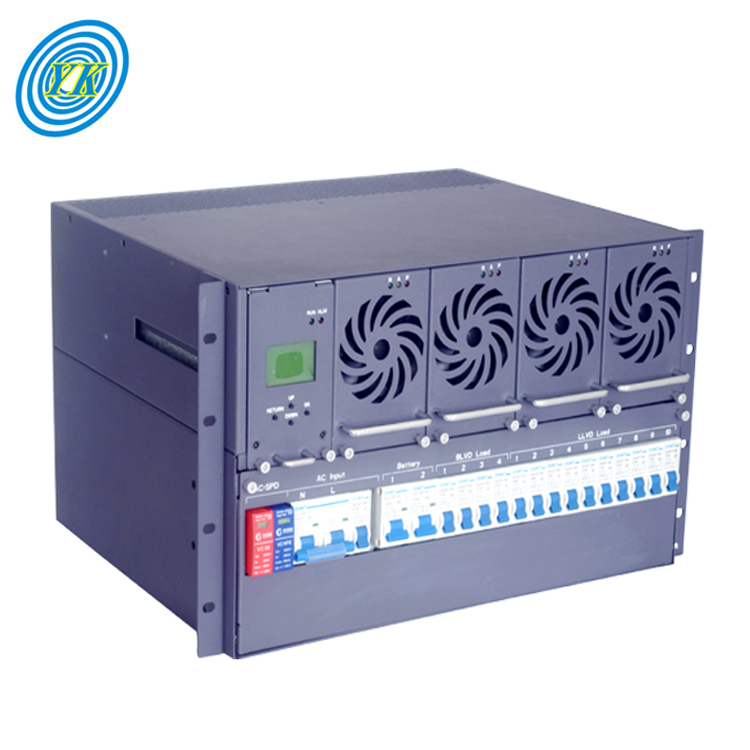
Unleashing the Potential of Rectifiers in Power Electronics
Click: 1276 Date: 09/13/2023 09::23::07 AM
Unleashing the Potential of Rectifiers in Power ElectronicsRectifiers are a crucial component in the world of power electronics, converting alternating current (AC) into direct current (DC). Their role is paramount in various applications, from power supplies for electronic devices to energy conversion in renewable energy systems. This article explores the potential of rectifiers, specifically in power electronics, highlighting their functionality, advancements, and future prospects.The Role of Rectifiers in Power ElectronicsRectifiers are primarily used in power electronics to convert AC into DC, a process known as rectification. The conversion is necessary because most electronic devices require DC for operation. Power electronics deals with control and conversion of electrical power with the help of power semiconductor devices. These devices include rectifiers, inverters, and converters, which are integral to the functioning of modern electrical systems.Advancements in Rectifier TechnologyIn the realm of power electronics, the focus has been on enhancing the efficiency of rectifiers, minimizing power loss, and improving power factor. The introduction of controlled rectifiers has been a significant advancement in this regard. These rectifiers allow for the control of the output DC voltage, which is not possible with conventional uncontrolled rectifiers. Controlled rectifiers can be further classified into half-controlled and fully controlled rectifiers.Another advancement is the development of hybrid rectifiers, which combine the advantages of both active and passive rectifiers. Hybrid rectifiers can achieve high power factor and low harmonic distortion, which are desirable attributes in many power electronics applications.Future ProspectsThe future of rectifiers in power electronics looks promising with the ongoing research and development activities. The focus is on developing rectifiers that are more efficient, compact, and cost-effective. There is also a growing interest in the design of rectifiers for specific applications, such as electric vehicles and renewable energy systems.Furthermore, the advancement in semiconductor technology, such as the use of wide-bandgap semiconductors like silicon carbide (SiC) and gallium nitride (GaN), is expected to revolutionize the design and performance of rectifiers in the future.In conclusion, rectifiers play a vital role in power electronics, and their potential is being continuously unleashed with advancements in technology. As we move towards a more electrified and energy-efficient future, the importance and application of rectifiers in power electronics are set to increase manifold.
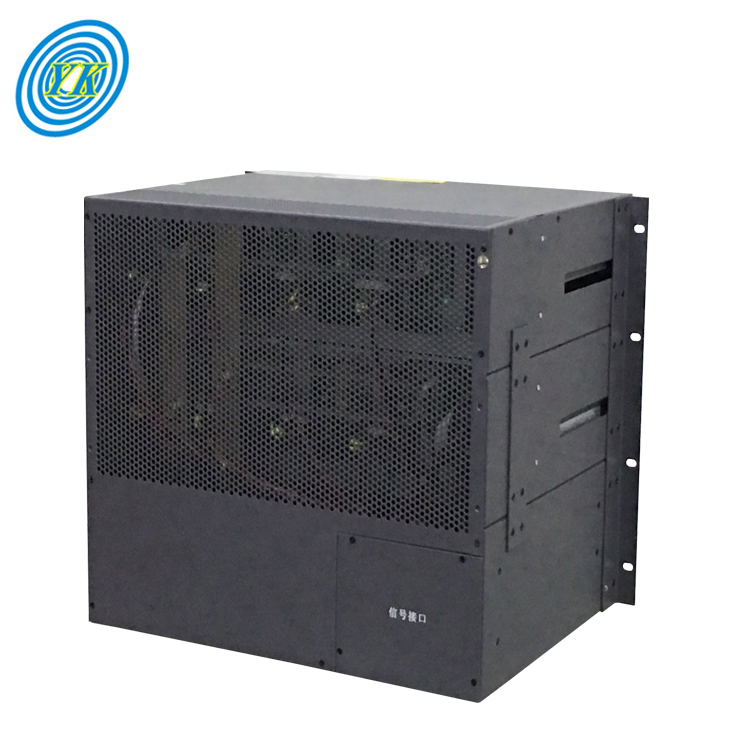
Exploring the Impact of Rectifiers in Medical Devices
Click: 1172 Date: 09/13/2023 09::10::00 AM
Exploring the Impact of Rectifiers in Medical DevicesRectifiers are a key component in many electronic devices, including medical equipment. They are used to convert alternating current (AC) to direct current (DC), which is needed for the operation of many medical devices. This article explores the impact of rectifiers in medical devices and their role in improving health outcomes.Rectifiers in Medical Devices: An OverviewMedical devices, from simple thermometers to complex MRI machines, depend on electronic components to function. Rectifiers, in particular, play a crucial role in ensuring these devices work correctly. They convert the AC power supplied from the mains into DC power, which is used by the electronic components in the device.For example, in an electrocardiogram (ECG) machine, rectifiers are used to convert the AC power into DC power, which is then used to amplify the electrical signals from the heart. This allows the machine to produce a clear and accurate representation of the heart's activity.The Importance of Rectifiers in Medical Device Safety and PerformanceThe safety and effectiveness of medical devices are of utmost importance. A malfunctioning device could lead to incorrect diagnoses or even harm to the patient. As such, the components used in these devices, including rectifiers, must be reliable and perform their functions accurately.Rectifiers ensure that the electronic components in medical devices receive the correct type of power (DC). If a device were to receive AC power directly, it could lead to erratic performance or even damage to the device. Therefore, rectifiers are crucial for the safe and effective operation of medical devices.Moreover, rectifiers also contribute to the efficiency of medical devices. By converting AC to DC power more efficiently, rectifiers can help to reduce the energy consumption of medical devices. This is particularly important in the context of the growing emphasis on energy efficiency and sustainability in healthcare.Innovations in Rectifiers and Their Impact on Medical DevicesIn recent years, there have been significant advancements in rectifier technology. For example, the development of high-efficiency rectifiers has resulted in devices that can convert AC to DC power with minimal energy loss.Such innovations can have a significant impact on medical devices. High-efficiency rectifiers can improve the energy efficiency of these devices, which can lead to cost savings in the long run. Additionally, these rectifiers can also improve the performance of the devices, leading to more accurate results.Furthermore, the development of smaller, more compact rectifiers has also made it possible to create smaller and more portable medical devices. This has enabled the development of portable medical devices such as handheld ultrasound machines and portable ECG machines, which can be used in a wider range of settings, from hospitals to remote rural areas.ConclusionRectifiers play a crucial role in the operation of medical devices. They ensure that these devices receive the correct type of power, enabling them to perform their functions accurately and safely. Innovations in rectifier technology can lead to more efficient, portable, and effective medical devices, thereby improving health outcomes. As such, ongoing research and development in this area is essential for the continued advancement of medical technology.
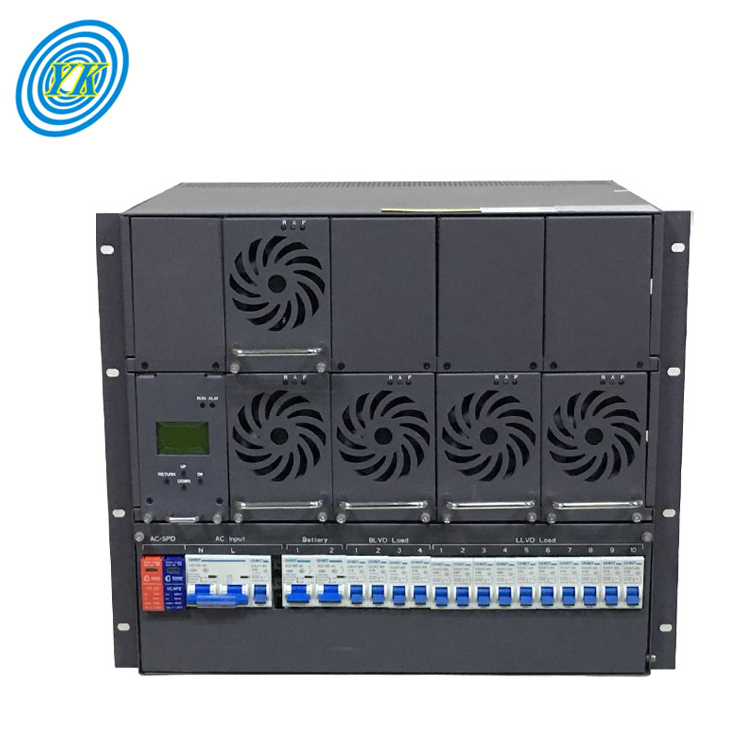
The Role of Rectifiers in Modern Telecommunication Systems
Click: 1325 Date: 09/12/2023 5::21::18 PM
The Role of Rectifiers in Modern Telecommunication SystemsRectifiers, which are essentially AC to DC power converters, play a crucial role in modern telecommunication systems. With the advent of 5G networks and their heavier power demands, the role of rectifiers has become increasingly significant.Understanding Rectifiers in Telecom InfrastructureIn telecommunication infrastructure, rectifiers are employed wherever AC voltages need to be converted to DC voltages to power telecom cells. AC power is used when IT equipment needs to be powered. When DC telecom devices, such as macrocells or small cells, need to be powered, the AC power is converted to DC with a rectifier. These telecom cells contain antennas that emit network signals.The Efficiency ChallengeEach conversion from AC to DC can be very inefficient, wasting about 20% of the total power the load consumes. Therefore, reducing the number of conversions needed is beneficial for both the environment and operating costs. Moreover, with the rise of 5G networks, telecom power demands are increasing, making the development of efficient telecom rectifiers a necessity.The Advent of Class 4 Telecom RectifiersTraditional telecom rectifiers typically have an output of 48V DC. However, the advent of 5G networks, which require almost 2x more power than 4G networks, has led to the development of Class 4 telecom rectifiers. These rectifiers can safely output up to 450V DC over cables that have a lighter cable gauge, making them more efficient for handling higher voltages. In addition to reducing energy and cost inefficiencies, Class 4 telecom rectifiers are paving the way for the proliferation of 5G telecom infrastructure.The Future of Rectifiers in Telecom IndustryThe future of rectifiers in the telecom industry lies in enhancing their efficiency, reliability, and cost-effectiveness. This can be achieved through the use of advanced technologies such as GaN devices, bridgeless PFC topologies, or soft-switching techniques. Furthermore, digital solutions with CAN, RS-485, or Bluetooth®/NB IoT can provide scalability and connectivity.In conclusion, rectifiers play a pivotal role in modern telecommunication systems, powering the devices that emit network signals. The development of efficient rectifiers, such as Class 4 telecom rectifiers, is key to meeting the increasing power demands of advanced networks like 5G. As the telecom industry continues to evolve, so too will the role and technology of rectifiers.
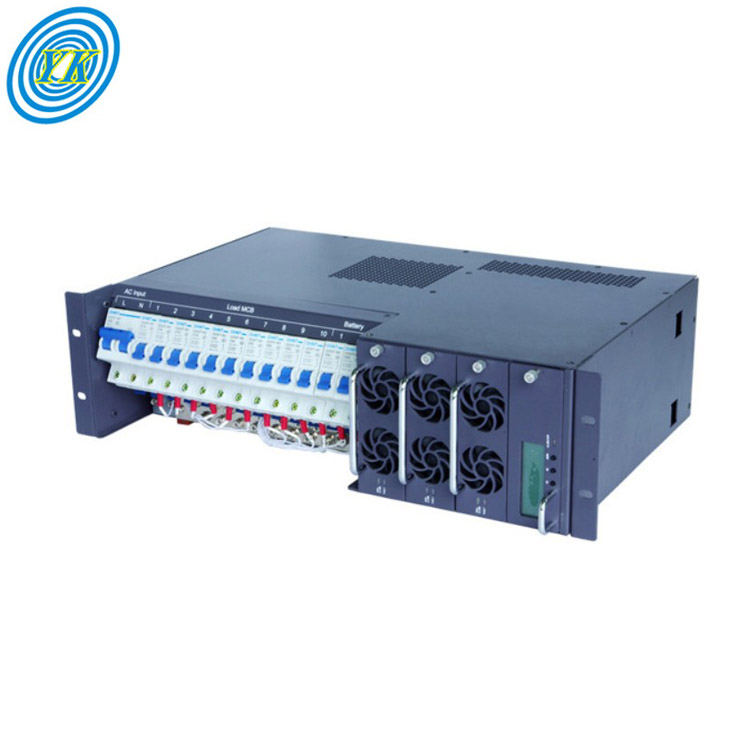
Rectifiers in Electric Vehicles: A Game Changer for the Automotive Industry
Click: 1891 Date: 09/12/2023 4::57::46 PM
Rectifiers in Electric Vehicles: A Game Changer for the Automotive IndustryThe advent of electric vehicles (EVs) has revolutionized the automotive industry, with rectifiers playing a pivotal role in this transformation. Rectifiers are crucial components that convert alternating current (AC) to direct current (DC), a critical process in the operation of EVs. This article explores the role of rectifiers in EVs and how they are shaping the future of the automotive industry.The Role of Rectifiers in Electric VehiclesIn electric vehicles, rectifiers are primarily used in the on-board charger (OBC), which is responsible for charging the vehicle's battery. The OBC takes AC input from the charging station and converts it to DC to charge the battery. The efficiency and reliability of this conversion process significantly impact the vehicle's performance and charging time, making the role of rectifiers crucial in EVs.Moreover, rectifiers are also used in the bidirectional power flow in Vehicle-to-Grid (V2G) operations. In V2G operations, not only is the vehicle's battery charged from the grid, but the battery can also supply power back to the grid when needed. This bidirectional power flow requires efficient rectification, making rectifiers an integral part of V2G systems.Impact on the Automotive IndustryThe use of rectifiers in EVs has several implications for the automotive industry. Firstly, it has led to advancements in charging technology. Fast charging, enabled by efficient rectifiers, has become a significant selling point for EVs.Secondly, the bidirectionality provided by rectifiers has paved the way for V2G technology, enabling EVs to serve as mobile power storage units. This feature has the potential to transform electric grids by providing a decentralized source of power, thereby reducing the load on power plants and promoting the use of renewable energy.Thirdly, the demand for efficient rectifiers has spurred innovation in the semiconductor industry, leading to the development of advanced power electronics components. These advancements are not only beneficial for EVs but also for various other applications, including renewable energy systems and industrial drives.Future TrendsAs the EV market continues to grow, the demand for efficient and reliable rectifiers is expected to rise. This demand is likely to drive further innovation in power electronics, leading to the development of more advanced and efficient rectifiers.Moreover, as V2G technology becomes more prevalent, the role of rectifiers in enabling bidirectional power flow will become increasingly important. This trend could lead to the development of new rectifier designs optimized for V2G operations.In conclusion, rectifiers play a crucial role in the operation of EVs and the growth of the EV market. As the automotive industry continues to evolve, the importance of rectifiers and power electronics is only set to increase.
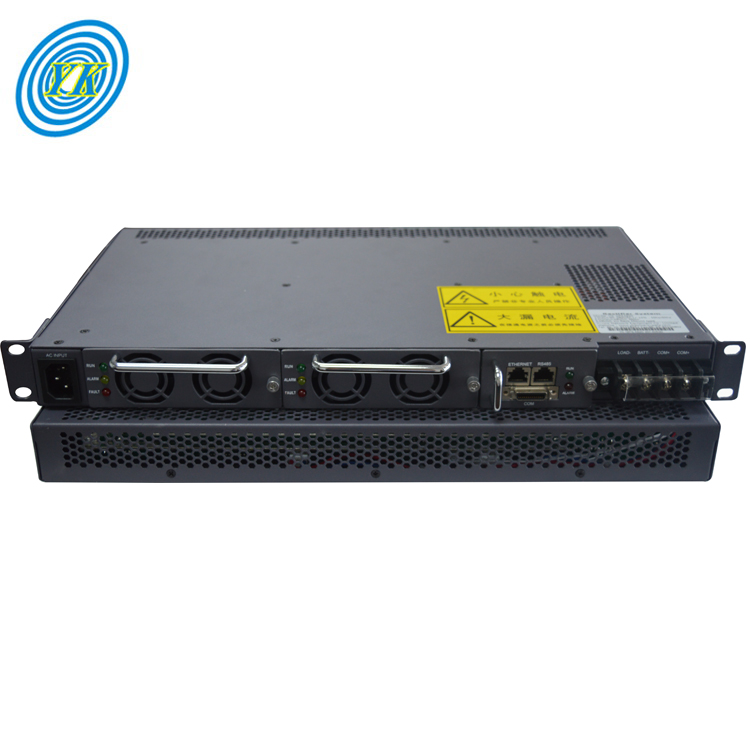
Harnessing the Power of Rectifiers in Renewable Energy Systems
Click: 2108 Date: 09/12/2023 4::53::52 PM
Harnessing the Power of Rectifiers in Renewable Energy SystemsRenewable energy systems are rapidly becoming a crucial part of the global energy landscape. With the increasing demand for clean and sustainable energy, the role of power electronics, particularly rectifiers, is becoming more significant. This article aims to explore how rectifiers are harnessed in renewable energy systems.Rectifiers: A Basic OverviewA rectifier is a device that converts alternating current (AC) to direct current (DC). This conversion is vital in many electronic devices and power systems, as DC is easier to store and is required by most electronic components to function.Rectifiers in Renewable Energy SystemsIn renewable energy systems, rectifiers play a vital role in power conversion. For instance, in wind energy systems, the power generated by the wind turbine is in the form of AC. However, most of the equipment used in the power grid operates on DC. Thus, rectifiers are used to convert the AC power into DC, making it suitable for use.Similarly, in solar power systems, the power generated by the solar panels is in DC form. However, the power grid operates on AC. Therefore, an inverter (which is essentially a type of rectifier) is used to convert the DC power into AC.Advancements in Rectification TechnologyWith the advancements in technology, high-efficiency rectifiers have emerged. These rectifiers are designed to minimize power loss during the conversion process, thus maximizing the efficiency of the renewable energy system. The use of such high-efficiency rectifiers can significantly improve the overall performance and cost-effectiveness of renewable energy systems.ConclusionIn conclusion, rectifiers play a pivotal role in renewable energy systems. They enable the conversion of power into a usable form, thus ensuring the efficient and effective operation of these systems. As the demand for renewable energy continues to grow, the importance of rectifiers and power electronics in general will only increase. Therefore, it is crucial to continue research and development in this area to further enhance the efficiency and performance of renewable energy systems.
Marine Inverter for Marine Applications
Click: 2031 Date: 09/12/2023 3::26::16 PM
Marine Inverter for Marine ApplicationsMarine inverters are a crucial component of marine electronics, providing the ability to power a variety of devices and systems onboard a boat or ship. They convert direct current (DC) power from a boat's battery or generator into alternating current (AC) that can be used to power appliances, lighting, and other electrical systems. Here's an in-depth look at the role of a marine inverter, its types and their applications.What is a Marine Inverter?A marine inverter takes DC power from your boat's battery bank and converts it into AC power. This allows you to use household items on your boat without being hooked up to shore power or facing the great expense of installing a generator.Types of Marine InvertersMarine inverters come in two main types: Modified Sine Wave (MSW) and True Sine Wave (TSW).Modified Sine Wave (MSW): This type of inverter produces a stepped wave, emulating the pure wave of AC power. MSW inverters can run most household gadgets, but they can have issues with electronic noise and may not run some items at their full power. They are not suitable for sensitive electronics, which can be damaged by the stepped wave.True Sine Wave (TSW): Also known as Pure Sine Wave (PSW), this type of inverter produces a pure wave, similar to a rolling wave on the ocean. TSW inverters are better at handling sensitive electronics and ensure that devices operate at their top performance level. They are usually more expensive than MSW inverters, but are necessary for charging computers, using printers, dimming lights, or watching flat-screen TVs onboard.Applications of Marine InvertersMarine inverters are used in a wide range of applications on boats and ships:Powering Appliances: Marine inverters can power a variety of appliances, from microwaves and fridges to televisions and computers.Lighting Systems: Marine inverters provide the AC power needed for the lighting systems on a boat or ship.Communication and Navigation Systems: Marine inverters can power communication and navigation systems, such as radios, GPS devices, and radar systems.Water Pumping Systems: In marine water-pumping applications, an inverter can be used to operate an asynchronous motor drive that powers the ship's seawater cooling pump.Battery Charging: Some marine inverters, such as the ProMariner True Power 2000PS, can also function as battery chargers, providing a dual function that can save space and money.When selecting a marine inverter, it's important to consider your specific needs, such as the types of devices you need to power, the total power requirement, and the sensitivity of the electronics. You should also consider the inverter's safety features, durability, and warranty
